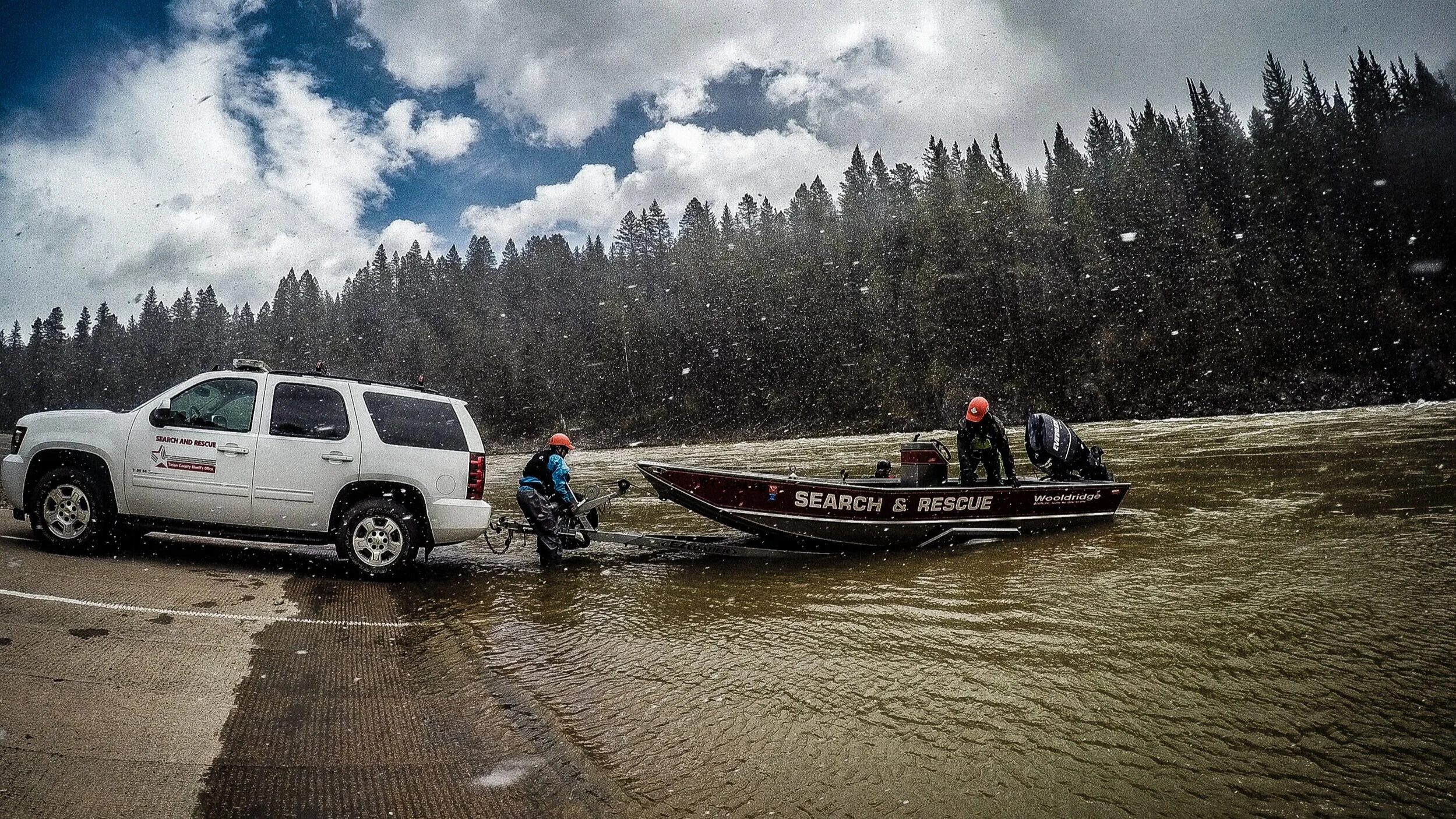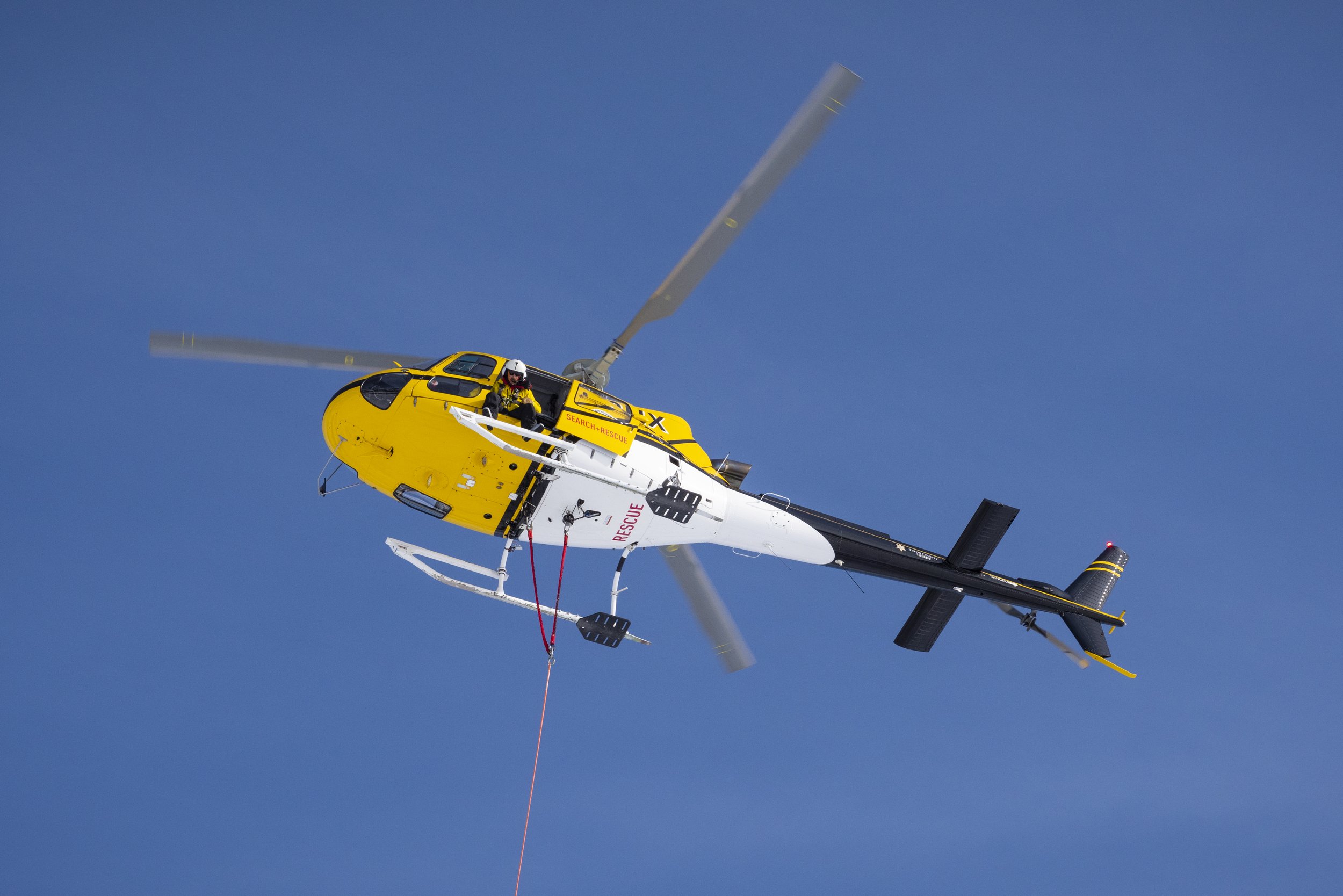Jackson, Wyo. — Teton County Search & Rescue volunteers were called to respond to four callouts in two days last week, continuing what has so far been a very busy summer of rescues. On Friday morning, July 29, the team was alerted to a pair of missing horseback riders in the Teton Wilderness north of Turpin Meadows. Later that afternoon, the team got another call about an injured horseback rider in the Gros Ventre Mountains. Then on Saturday, July 30, the volunteers responded to a woman who’d been injured while riding her mountain bike on the Mill Creek Trail of Teton Canyon. About 90 minutes later, there was another callout to help an injured hiker in Phillips Canyon.
TCSAR volunteers transport an injured mountain biker down the Mill Creek Trail in Teton Canyon on Saturday, July 30. Photo: TCSAR
The weekend tally means the team has now responded to 30 calls for service since June 1. This surpasses the call rate during the same time frame from a year ago, when the team had responded to 24 calls. The 30 calls since June 1 is the most since at least 2012.
In the first mission on Friday, TCSAR was notified that a pair of horseback riders had left Turpin Meadows on Thursday to go for a half-day ride but failed to return before nightfall. The team was paged at 5 a.m. Friday to initiate a response. The team put in a request for the interagency helicopter to conduct an aerial search. A sheriff deputy and ground-based TCSAR team was also dispatched to the trailhead to see if they could find the missing subjects’ vehicle. The vehicle was still at the trailhead, along with paper maps on the dash. Meanwhile, the heli request was granted, and two SAR members were flown over the area in question to see if they could spot the missing horse riders. At 12:30 p.m., the horseback riders were eventually located, uninjured, about one mile north of Soda Fork and the North Buffalo Fork. They were lost and had spent a cold night out in the woods but were otherwise OK. They exited the backcountry on their own power and notified TCSAR when they reached their vehicle.
TCSAR volunteers scan the backcountry from the interagency helicopter in search of two missing horseback riders on July 29. The horse riders were found and uninjured, albeit a little lost. Photo: TCSAR
The Turpin Meadows operation was the eighth interagency helicopter mission by TCSAR volunteers this summer. Because TCSAR does not have a helicopter on contract in the summer, they must go through Teton Helitack to have a helicopter released for rescues in Teton County. The helicopter may be released if it’s available and not being used for another purpose. TCSAR is grateful for the Teton Helitack partnership that allows the team to conduct these helicopter missions.
Later that Friday afternoon, at 3:39 p.m., the volunteers were paged to respond to a woman who had fallen from her horse near Goosewing Ranch. TCSAR responded by driving a truck up the Gros Ventre Road. They located the patient, treated her injuries, and helped her to a waiting ambulance at the trailhead. The incident involved 12 volunteers and took 3 hours, 54 minutes.
At 11:20 a.m. on Saturday, the team was alerted to a female mountain biker who had crashed about a mile up the Mill Creek Trail in Teton Canyon. Five volunteers drove over Teton Pass to the trailhead and hiked up the trail to locate the patient, who was complaining of severe pain in her lower leg. The team packaged her for transport in the wheeled litter and brought her down the trail to a waiting ambulance. That incident involved 10 volunteers and 4 hours to complete.
As that rescue was in progress, the team was called to assist a woman who’d become injured while hiking in Phillips Canyon. The woman had reportedly fallen while crossing a log bridge. Two TCSAR volunteers who were originally driving to the Mill Creek rescue were diverted directly to the Phillips Bench, along with a truck with more team members. The vehicles drove up the powerline two-track and hiked in about 1.5 miles with the wheeled litter and medical supplies. The volunteers packaged the patient, and wheeled her on the litter back to the RZR. From there, the team drove her to the trailhead to a waiting ambulance. This mission had 16 volunteers and came to a close after 3 hours, 57 minutes.
—About TCSAR and TCSAR Foundation: Teton County Search & Rescue was started in 1993 by the Teton County Sheriff’s Office to provide vital emergency search and rescue services for Teton County and surrounding areas to those in need. The TCSAR Foundation supports TCSAR volunteers through direct support, community education and advocacy. Together, we create an organization that works to keep Teton County residents and visitors safe in the backcountry 24 hours a day, 7 days a week, 365 days a year.







